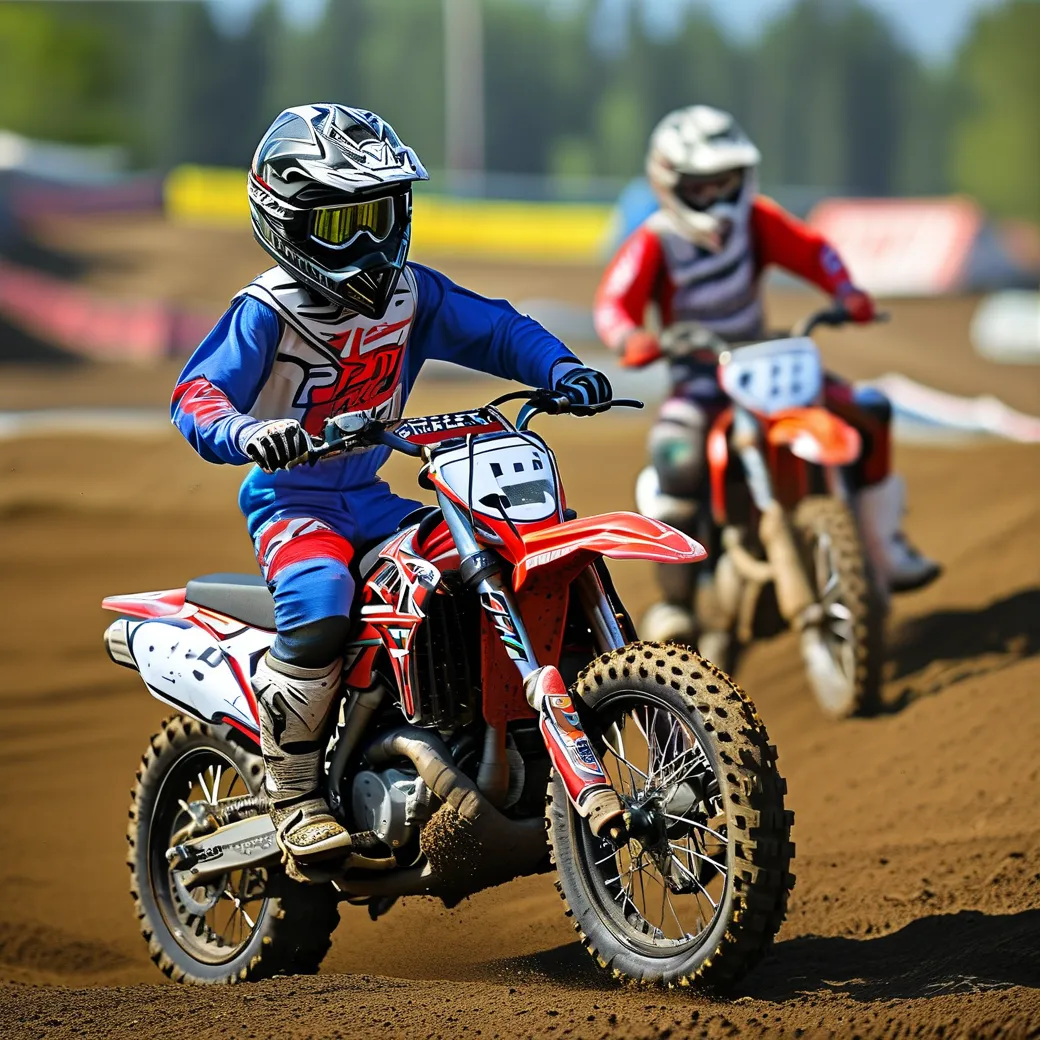When shopping for a racing dirt bike, the first step is understanding the critical differences between off-road and track-ready models. While both types share core components like high-torque engines and durable frames, their design philosophies cater to distinct riding environments. Off-road bikes prioritize versatility for unpredictable terrain, while track models focus on precision for closed-course racing. Misjudging this divide could leave you with a bike that struggles in your preferred discipline.
Key Differences: Off-Road vs. Track-Ready Design
1. Suspension Systems
Off-road dirt bikes feature longer suspension travel (often 12+ inches) to absorb impacts from rocks, roots, and jumps encountered in trails or enduro events. Brands like KTM and Husqvarna optimize their EXC/FE models with progressive damping for variable terrain. In contrast, motocross bikes (e.g., Yamaha YZ450F or Honda CRF450R) use stiffer suspensions with 10-11 inches of travel tuned for controlled track landings and rapid weight transfers during jumps.
2. Weight Distribution
Track bikes emphasize centralized mass for quicker cornering—a necessity when navigating rhythm sections or whoops at 30+ mph. Off-road models often carry slightly higher weights (260-300 lbs vs. 220-250 lbs for MX bikes) to accommodate features like kickstands, larger fuel tanks, and lighting systems mandated for trail legality.
3. Engine Characteristics
Motocross engines prioritize explosive power delivery in mid-to-high RPM ranges, ideal for short sprints between obstacles. Off-road machines balance low-end torque for hill climbs with smoother power curves to prevent stalling in technical sections. The 2023 Kawasaki KX450X, for instance, includes a dedicated off-road ECU mapping absent in its motocross counterpart.
Performance Priorities by Riding Style
For Trail/Enduro Riders:
– 18-inch rear wheels (vs. 19-inch on MX bikes) improve traction on loose surfaces
– Electric starters and hydraulic clutches reduce fatigue during long rides
– Skid plates and radiator guards as standard protections
For Motocross/GP Racers:
– Higher-compression engines (13:1+ ratios) for peak horsepower
– Narrower frames for aggressive body positioning
– Minimalist designs excluding unnecessary components like odometers
Skill Level & Budget Considerations
Beginner riders (1-2 years experience) should prioritize manageable powerbands—250cc four-strokes or 125cc two-strokes for tracks; 300cc two-stroke enduro bikes like the Beta RR 300 offer forgiving torque for technical trails. Intermediate to advanced riders can explore 450cc models, but beware of maintenance costs: MX bikes typically require piston replacements every 40-50 hours versus 80-100 hours for trail-oriented engines (per ProX Racing Parts reliability data).
Verified Testing Insights
Recent dyno tests by Dirt Bike Magazine revealed that the 2024 Husqvarna FE 350 produces 42 hp with a linear curve ideal for endurance racing, while its TC 250 motocross sibling peaks at 47 hp with aggressive throttle response. Meanwhile, GNCC champion Jordan Ashburn notes in an Racer X interview: “My practice bike gets suspension revalved monthly—track conditions change faster than trail ecosystems.”
Final Selection Checklist
- Terrain Frequency: Will you ride more desert scrambles (choose off-road) or supercross-style tracks (opt MX)?
- Local Regulations: Many state parks require spark arrestors and USDA-quiet compliant exhausts (~94 dB).
- Aftermarket Support: Brands like Sherco have limited dealership networks compared to Japanese manufacturers—factor in parts availability.
Industry surveys show 68% of buyers regret their first dirt bike purchase due to poor discipline alignment (AMA, 2023). Cross-reference manufacturer specs with third-party reviews from trusted sources like Dirt Rider or Motocross Action, and always test-ride comparable models at dealerships. Remember: The “best” bike isn’t about prestige—it’s what lets you push limits safely in your chosen environment.
